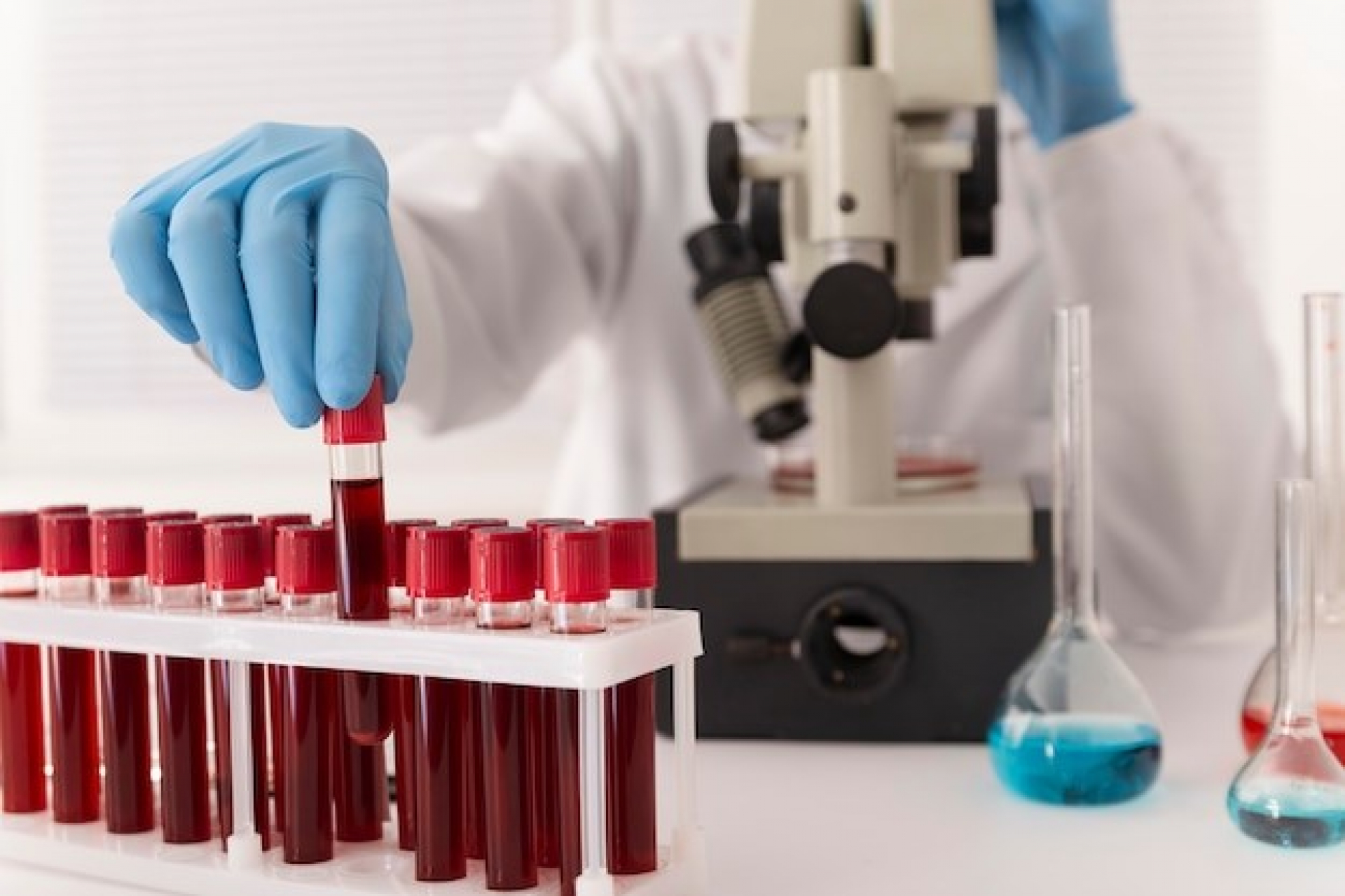The complete blood count (CBC) is a comprehensive blood panel that enables your healthcare provider to thoroughly evaluate the different types of cells in your blood. By measuring the number of red blood cells (RBC), white blood cells (WBC), and platelets (PLT), this test provides crucial information about your overall health. Since each of these blood cell types performs vital functions, analyzing their levels can offer valuable health insights. Furthermore, a CBC can aid in the diagnosis of various health conditions and help monitor the impact of different diseases or medical treatments on the body.
Purpose of the CBC test
A CBC test analysis is used to provide your healthcare provider with comprehensive information regarding your overall health status. This is crucial as it examines all types of blood cells and certain cell characteristics using just one sample.
The CBC is primarily utilized for diagnosing, monitoring, and screening purposes.
Diagnosis: The process of diagnosis involves identifying the underlying cause of a patient's symptoms. By examining the blood, the CBC can detect numerous abnormalities that are associated with distinct medical problems. In many cases, it can provide confirmation or exclusion of certain conditions, such as anemia, thalassemias, infections, etc., and is often used in conjunction with other tests to reach a conclusive diagnosis.
Monitoring: Patients with blood cell disorders can be monitored using a complete blood count (CBC). This process helps in assessing the impact of treatment on a patient's condition and in detecting potential side effects of certain medical interventions.
Screening: Screening involves the evaluation of individuals to detect any underlying health problems before they exhibit any symptoms. As part of routine check-ups, healthcare providers may occasionally prescribe a complete blood count (CBC) as a screening test.
CBC examines a variety of blood components
A CBC involves multiple measurements, which includes the number of blood cells and certain physical characteristics. The standard CBC includes several elements related to RBCs, WBCs, and PLT, as described in the following sections:
Red blood cell measurements
Red blood cells, or erythrocytes, transport oxygen from the lungs to the various tissues and organs throughout the body. A complete blood count examination consists of multiple basic assessments of red blood cells:
- RBC count is the number of red blood cells in your blood sample.
- Hemoglobin is the concentration of this oxygen-carrying protein within red blood cells.
- Hematocrit is also known as packed cell volume (PCV) and determines the volume of blood occupied by red blood cells.
A complete blood count also offers information regarding the physical characteristics of red blood cells. These characteristics are referred to as RBC indices, including various types:
- Mean corpuscular volume (MCV) is the measure of the average red blood cell size found in the blood.
- Mean corpuscular hemoglobin (MCH) represents the average amount of hemoglobin present in every individual red blood cell.
- Mean corpuscular hemoglobin concentration (MCHC)
- Red cell distribution width (RDW) represents the differences in the volume and size of the red blood cells.
White blood cell measurements
White blood cells, or leukocytes, play a vital role in maintaining the body's immune system. A complete blood count assesses the white blood cell count, representing the overall quantity of white blood cells present in a blood sample.
CBC with differential is a common variation of the CBC. The WBC differential provides a breakdown of the amount of five distinct :
- Neutrophils, generated by the bone marrow, constitute the greatest percentage of white blood cells. Their primary function is to fight a broad spectrum of inflammatory and infectious diseases.
- Lymphocytes, including B-cells and T-cells, are predominantly located in the lymphatic system and play a crucial role in fighting bacteria and other pathogens present in the bloodstream.
- Monocytes function alongside neutrophils to fight infections and other ailments while eliminating damaged or deceased cells.
- Eosinophils become active in response to allergies as well as certain infections.
- Basophils play a crucial role in the initial detection of infections and in the process of wound healing.
Platelet measurements
Platelets, also known as thrombocytes, are small cell fragments that are present in the bloodstream. In the event of an injury and subsequent bleeding, platelets play a vital role in halting the bleeding by sticking to the site of injury and aggregating together to create a temporary plug.
One of the standard components of the CBC is the PLT count, which is the quantity of PLT present in your blood sample. In certain instances, your healthcare provider may also measure the mean PLT volume (MPV), which is used to determine the average size of PLT.
Interpretation of laboratory test results:
|
Parameters |
Normal blood counts |
|
RBC count (Male) |
4.7 to 6.1 million cells/mcL |
|
RBC count (Female) |
4.2 to 5.4 million cells/mcL |
|
WBC count |
4,500 to 10,000 cells/mcL |
|
Hematocrit (Male) |
40.7% to 50.3% |
|
Hematocrit (Female) |
36.1% to 44.3% |
|
Hemoglobin (Male) |
13.8 to 17.2 gm/dL |
|
Hemoglobin (Female) |
12.1 to 15.1 gm/dL |
|
MCV |
80 to 95 femtoliter |
|
MCH |
27 to 31 pg/cell |
|
MCHC |
32 to 36 gm/dL |
|
Platelet count |
150,000 to 450,000/dL |
Hemoglobin levels can fluctuate at different altitudes, and the values provided are typical results for these tests. It is important to note that the standard ranges may show slight variations between different testing facilities.
Deviation from normal levels indicates the following:
- Anaemia
Low levels of red blood cells or hemoglobin may suggest the presence of anaemia, a condition that can lead to symptoms such as fatigue, weakness, and pale skin. Anaemia can be caused by various factors, including deficiencies in iron, vitamin B12, or folate, kidney disease, or inherited disorders like sickle cell anaemia.
- Infections
Increased white blood cell counts could be a sign of infections triggered by bacteria, viruses, or parasites. Determining the underlying cause of the infection can help healthcare providers in formulating an effective treatment plan.
- Inflammatory conditions
Elevated levels of white blood cells may indicate infections caused by bacteria, viruses, or parasites. Identifying the source of the infection can assist healthcare providers in developing an appropriate treatment strategy.
- Blood clotting disorders
Abnormal platelet counts indicate the presence of blood clotting disorders that elevate the likelihood of uncontrollable bleeding or clot formation.
- Cancer and blood diseases
Alterations in red and white blood cell counts could indicate the presence of conditions such as leukemia or lymphoma, as well as other blood disorders such as thrombocytopenia or polycythemia vera.
- Dehydration
Elevated red blood cell counts, and hematocrit levels are indicative of dehydration, which arises when the body lacks sufficient fluid intake. In severe cases, dehydration can cause imbalances in electrolytes, dizziness, and even organ failure.
A comprehensive understanding of your CBC report is essential for maintaining your health and effectively managing diseases. The CBC test offers vital information on red and white cell counts, hemoglobin, hematocrit, and platelets, making it an indispensable test for both healthcare providers and patients.
While the CBC test alone may not provide a definitive diagnosis, it plays a crucial role in detecting potential health problems and monitoring the effectiveness of treatment. By incorporating regular CBC tests into your routine health check-ups and engaging in discussions about the results with your healthcare provider, you can enhance your overall well-being.


